Quanta Computer OA8BCM94306MP NoteBook User Manual Using Your Gateway M275 Notebook
Quanta Computer Inc NoteBook Using Your Gateway M275 Notebook
Contents
Users Manual System 5
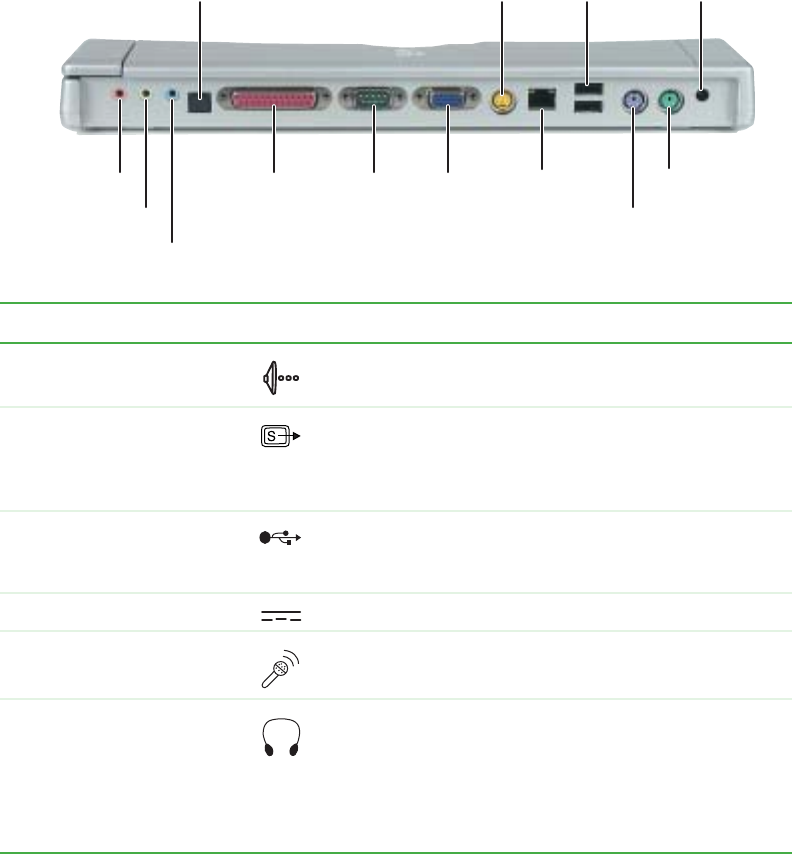
280
Chapter 16: Using the Gateway M275 Port Replicator
www.gateway.com
Back
Component Icon Description
S/PDIF digital audio jack Plug an optical (Toslink) AC-3 digital audio cable into this
jack.
S-Video out jack Plug a standard S-Video cable into this jack and the jack
on an S-Video device (such as a television or VCR). For
more information, see “Viewing the display on a
television” on page 162.
USB ports Plug USB (Universal Serial Bus) devices (such as a USB
Iomega™ Zip™ drive, printer, scanner, camera,
keyboard, or mouse) into these ports.
Power connector Plug the AC adapter cable into this connector.
Microphone jack Plug a microphone into this jack.
Headphone jack Plug amplified speakers or headphones into this jack.
The built-in speakers on your convertible tablet PC are
turned off when speakers or headphones are plugged
into this jack.
This jack is turned off when headphones are plugged into
your convertible tablet PC’s headphone jack.
S/PDIF digital
audio jack
Headphone jack
Line in jack
Power connector
Ethernet
jack
Serial
port Monitor
port
Parallel
port
USB
ports
S-Video
out jack
PS/2 keyboard port
PS/2 mouse port
Microphone jack
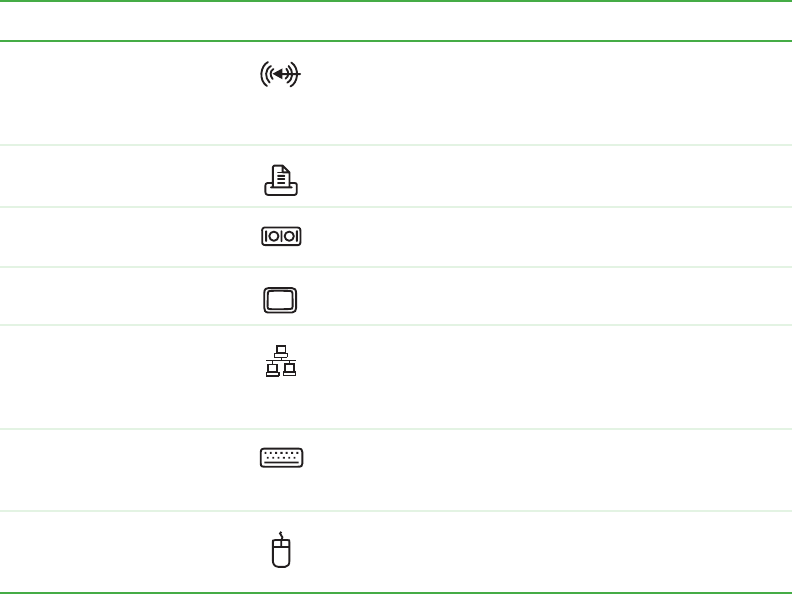
281
Back
www.gateway.com
Line in jack Connect an external audio input source (such as a
stereo) to this jack so that you can record sound on your
convertible tablet PC or play sound through your
convertible tablet PC speakers.
Parallel port Plug a parallel device (such as a printer) into this port.
Serial port Plug a serial device (such as a digital camera) into this
port.
Monitor port Plug an analog VGA monitor into this port.
Ethernet jack Plug a 10/100 Ethernet network cable into this jack. For
more information, see “Connecting to a wired Ethernet
network” on page 48 and “Networking Your
Gateway M275” on page 207.
PS/2 keyboard port Plug a Personal System/2 (PS/2) keyboard into this port.
Attaching a PS/2 keyboard to your port replicator may
deactivate the built-in keyboard.
PS/2 mouse port Plug a Personal System/2 (PS/2) mouse into this port.
Attaching a PS/2 mouse to your port replicator may
deactivate the touchpad.
Component Icon Description
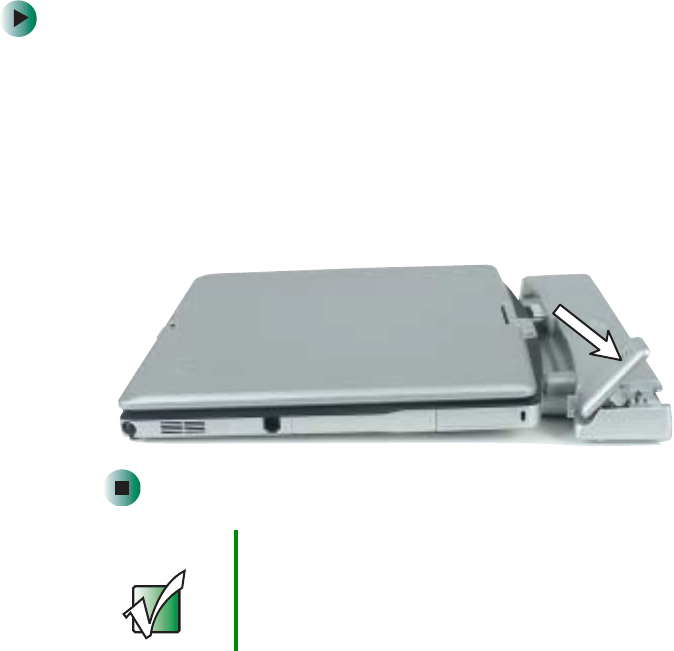
282
Chapter 16: Using the Gateway M275 Port Replicator
www.gateway.com
Connecting to the port replicator
You can attach your convertible tablet PC to the port replicator while your
convertible tablet PC is off, on, or in Standby mode.
Attaching to the port replicator
To attach your convertible tablet PC to the port replicator:
1Connect external devices to the ports on the port replicator.
2Make sure the docking release latch is in the raised position.
3Align the connector holes on the bottom of your convertible tablet PC with
the docking posts on the port replicator.
4Press down on the docking release latch until your convertible tablet PC
moves into place.
Important Your convertible tablet PC may detect additional devices
and add drivers after being attached to the port replicator.
This process must be completed for components to work
correctly. Follow any on-screen instructions, if necessary.
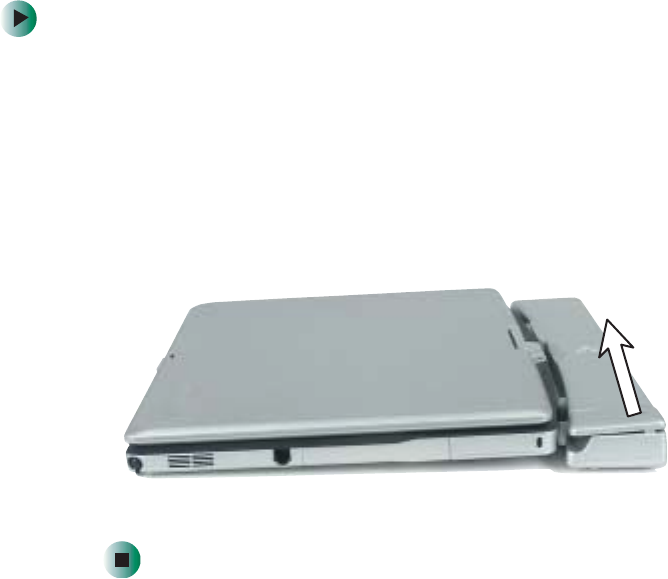
283
Connecting to the port replicator
www.gateway.com
Disconnecting from the port replicator
You can separate your convertible tablet PC from the port replicator while your
convertible tablet PC is off or on (not in Standby or Hibernate mode).
To separate your convertible tablet PC from the port replicator:
1If your convertible tablet PC is off, go to Step 2.
-OR-
Click/Tap Start, then click/tap Undock Computer. The Undock Computer
menu item appears in the Start menu only while your convertible tablet PC
is docked.
2Pull up on the docking release latch. Your convertible tablet PC will move
out and away from the port replicator.
3Lift your convertible tablet PC off of the port replicator.
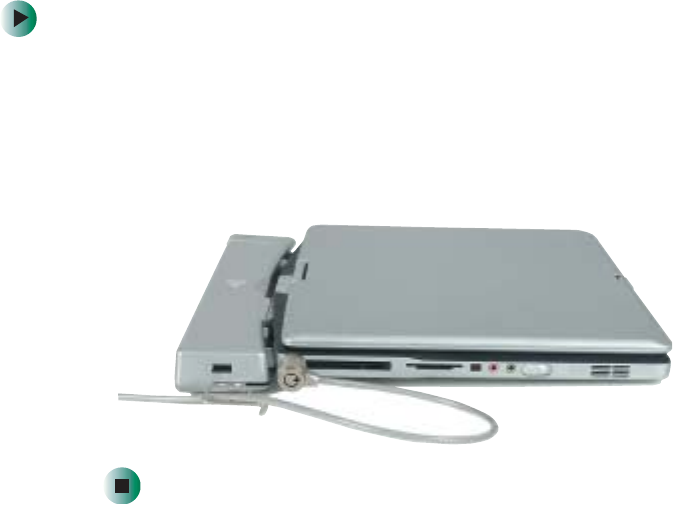
284
Chapter 16: Using the Gateway M275 Port Replicator
www.gateway.com
Securing your port replicator
You can secure your convertible tablet PC and port replicator to an object by
using the security ring located on the left side of the port replicator and the
Kensington lock slot located on the left side of your convertible tabletPC.
To secure your convertible tablet PC and port replicator:
1Open the security ring on the port replicator.
2Attach your convertible tablet PC to the port replicator.
3Secure one end of the Kensington cable to a solid object, then run the other
end of the cable through the security ring and lock it into the slot provided
on the left side of your convertible tablet PC.

17
285
Troubleshooting
This chapter provides some solutions to common
convertible tablet PC problems. Read this chapter to learn
how to:
■Troubleshoot typical hardware and software problems
■Get telephone support
■Use automated troubleshooting systems
■Get tutoring and training
If the suggestions in this chapter do not correct the
problem, see “Getting Help” on page 51 for more
information about how to get help.
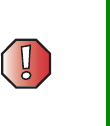
286
Chapter 17: Troubleshooting
www.gateway.com
Safety guidelines
While troubleshooting your convertible tablet PC, follow these safety
guidelines:
■Never remove the memory bay cover, keyboard, or hard drive kit if your
convertible tablet PC is turned on, the batteries are installed, or while the
modem cable, network cable, or AC power adapter are connected to your
convertible tablet PC.
■Make sure that you are correctly grounded before accessing internal
components. For more information about preventing damage from static
electricity, see “Preventing static electricity discharge” on page 260.
■After you complete any maintenance tasks where you remove the memory
bay cover, keyboard, or hard drive kit, make sure that you replace the cover,
keyboard, or hard drive kit, reinstall any screws, then replace the batteries
before you start your convertible tablet PC.
Warning Do not try to troubleshoot your problem if power cords or
plugs are damaged, if your convertible tablet PC was
dropped, or if the case was damaged. Instead, unplug your
convertible tablet PC and contact a qualified computer
technician.

287
First steps
www.gateway.com
First steps
If you have problems with your convertible tablet PC, try these things first:
■Make sure that the AC power adapter is connected to your convertible
tablet PC and an AC outlet and that the AC outlet is supplying power.
■If you use a power strip or surge protector, make sure that it is turned on.
■If a peripheral device (such as a keyboard or mouse) does not work, make
sure that all connections are secure.
■Make sure that your hard drive is not full.
■If an error message appears on the screen, write down the exact message.
The message may help Gateway Technical Support in diagnosing and
fixing the problem.
■If you added or removed peripheral devices, review the installation
procedures you performed and make sure that you followed each
instruction.
■If an error occurs in a program, see the program’s printed documentation
or the online help.
Software support tools
Your convertible tablet PC may include the following support tool to help you
diagnose and fix problems:
■PC Doctor is a comprehensive hardware diagnostic and system information
tool that can test your convertible tablet PC and determine its
configuration. PC Doctor provides 85 professional diagnostic tests directly
from your convertible tablet PC.
This support tool is available by clicking/tapping Start, All Programs, then
clicking/tapping Gateway Utilities.
Help and
Support For more information about troubleshooting, click/tap
Start, then click/tap Help and Support.
Type the keyword troubleshooting in the Search box
, then click/tap the arrow.
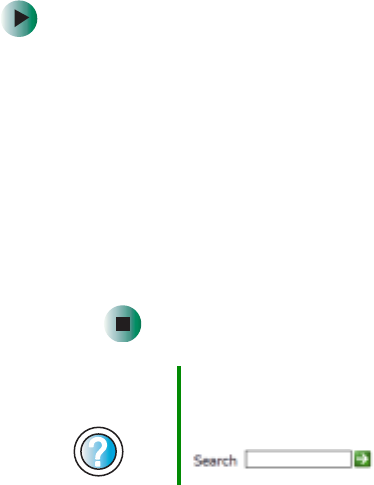
288
Chapter 17: Troubleshooting
www.gateway.com
Troubleshooting
Audio
See “Sound” on page 308.
Battery
See “Power” on page 305.
Device installation
You have computer problems after adding a new device
Sometimes a new device, such as a PC Card, can cause a system resource (IRQ)
conflict. Check IRQ usage to determine if there is an IRQ conflict.
To check IRQ usage:
1Click/Tap Start, then click/tap Control Panel. The Control Panel
window opens. If your Control Panel is in Category View, click/tap
Performance and Maintenance.
2Click/Double-click/Tap/Double-tap System, click/tap the Hardware
tab, then click/tap Device Manager. The Device Manager window
opens.
3Click/Tap View, then click/tap Resources by type.
Double-click/Double-tap Interrupt request (IRQ). All IRQs and their
hardware assignments are displayed.
Help and
Support For more information about IRQs, click/tap Start, then
click/tap Help and Support.
Type the keyword IRQs in the Search box
, then click/tap the arrow.

289
Troubleshooting
www.gateway.com
To free IRQ resources for the new device:
1In the Device Manager window, check the device list for a resource
conflict. A resource conflict appears as a black exclamation point in
a yellow circle.
2Remove the device you are trying to install, then determine which
one of the existing devices or ports you can disable.
3Right-click/Button-tap the device or port you want to disable, then
click/tap Disable. The device or port is disabled.
Diskette drive (external)
The diskette drive is not recognized
■Shut down and restart your convertible tablet PC.
■The USB cable may not be inserted completely into the USB port. Press
the cable into the port, then try to access the diskette again.
You see an “Access Denied” or “Write protect” error message
■Move the write-protection tab in the upper-right corner of the diskette
down (unprotected).
■The diskette may be full. Delete unnecessary files on the diskette and try
again.
■Not all diskettes are IBM-compatible. Make sure that the diskette you are
using is IBM-compatible.
■Try a different diskette. Occasionally diskettes are flawed and cannot be
read by the diskette drive.
You see a “Disk is full” error message
■Delete unnecessary files on the diskette.
■Try a different diskette. Occasionally diskettes are flawed and cannot be
read by the diskette drive.
■Run Error checking on the diskette. For more information, see “Checking
the hard drive for errors” on page 238. If errors are detected and corrected,
try using the diskette again.
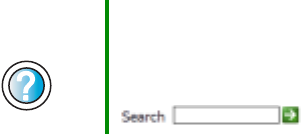
290
Chapter 17: Troubleshooting
www.gateway.com
You see a “Non-system disk”, “NTLDR is missing”, or “Disk error”
error message
■Eject the diskette from the diskette drive, then press ENTER.
■Make sure that the diskette you are using is IBM-compatible.
The diskette drive status indicator is lit continuously
Remove the diskette from the drive. If the indicator stays on, try restarting your
convertible tablet PC.
Display
The screen is too dark
Adjust the brightness using the system keys. For more information, see “System
key combinations” on page 30.
The screen resolution is not correct
Change the screen resolution from the Display Properties dialog box. For more
information, see “Adjusting the screen resolution” on page 195.
The text on the display is dim or difficult to read
■Adjust the brightness and contrast using the system keys. For more
information, see “System key combinations” on page 30.
■Change the display settings. For more information, see “Adjusting the
screen and desktop settings” on page 193.
■Move your convertible tablet PC away from sources of electrical
interference, such as televisions, unshielded speakers, microwaves,
fluorescent lights, and metal beams or shelves.
Help and
Support For more information about changing the screen
resolution, click/tap Start, then click/tap Help and
Support.
Type the keyword screen resolution in the Search box
, then click/tap the arrow.
291
Troubleshooting
www.gateway.com
The display has pixels that are always dark or too bright
This condition is normal and inherent in the TFT technology used in
active-matrix LCD screens. Gateway’s inspection standards keep these to a
minimum. If you feel these pixels are unacceptably numerous or dense on your
display, contact Gateway Technical Support to identify whether a repair or
replacement is justified based on the number of pixels affected.
DVD or DVD/CD-RW drives
Your convertible tablet PC does not recognize a disc
■The disc may not be seated correctly in the tray. When you place a disc
on the tray, make sure that you press the disc firmly onto the spindle so
the retainers hold the disc in place.
■The modular drive may not be inserted completely into the modular bay.
Press the module into the bay, then try to access the disc again.
■Make sure that the disc label is facing up, then try again.
■Try a different disc. Occasionally discs are flawed and cannot be read by
the drive.
■Some music CDs have copy protection software. You may not be able to
play these CDs on your convertible tablet PC.
■Your convertible tablet PC may be experiencing some temporary memory
problems. Shut down and restart your convertible tablet PC.
■Clean the disc. For more information, see “Cleaning CDs or DVDs” on
page 293.
An audio CD does not produce sound
■Make sure that the CD label is facing up, then try again.
■Some music CDs have copy protection software. You may not be able to
play these CDs on your convertible tablet PC.
■Make sure that the volume control on your convertible tablet PC is turned
up. For more information, see “System key combinations” on page 30.
■Make sure that the Windows volume control is turned up. For more
information, see “Adjusting the volume” on page 102.
■Make sure that Mute controls are turned off. For more information about
the mute setting, see “System key combinations” on page 30 or “Adjusting
the volume” on page 102.
292
Chapter 17: Troubleshooting
www.gateway.com
■Make sure that headphones are not plugged into the headphone jack. For
the location of the headphone jack, see “Left Side” on page 3 and “Back”
on page 280.
■If you are using powered speakers, make sure that they are plugged in and
turned on.
■Clean the CD. For more information, see “Cleaning CDs or DVDs” on
page 293.
■Your convertible tablet PC may be experiencing some temporary memory
problems. Shut down and restart your convertible tablet PC.
■Reinstall the audio device drivers. For more information, see “Reinstalling
device drivers” on page 249.
A DVD movie will not play
■Make sure that the label or side you want to play is facing up, then try
again.
■Shut down and restart your convertible tablet PC.
■Clean the DVD. For more information, see “Cleaning CDs or DVDs” on
page 293.
■DVD discs and drives contain regional codes that help control DVD title
exports and help reduce illegal disc distribution. To be able to play a DVD,
the disc’s regional code and your DVD drive’s regional code must match.
The regional code on your DVD drive is determined by your convertible
tablet PC’s delivery address. The regional code for the United States and
Canada is 1. The regional code for Mexico is 4. Your DVD drive’s regional
code must match the regional code of the disc. The regional code for the
disc is on the disc, disc documentation, or packaging.
If the DVD movie does not play, the disc’s regional code and your DVD
drive’s regional code may not match.
■Make sure that the InterVideo program has been installed on your
convertible tablet PC. See “Playing a DVD” on page 124 for more
information.
A DVD does not produce sound on a TV
■Audio is not transmitted through the S-Video out jack. Use the built-in
speakers, a set of headphones or external powered speakers, or connect
your convertible tablet PC to a stereo system to hear sound while playing
a DVD.
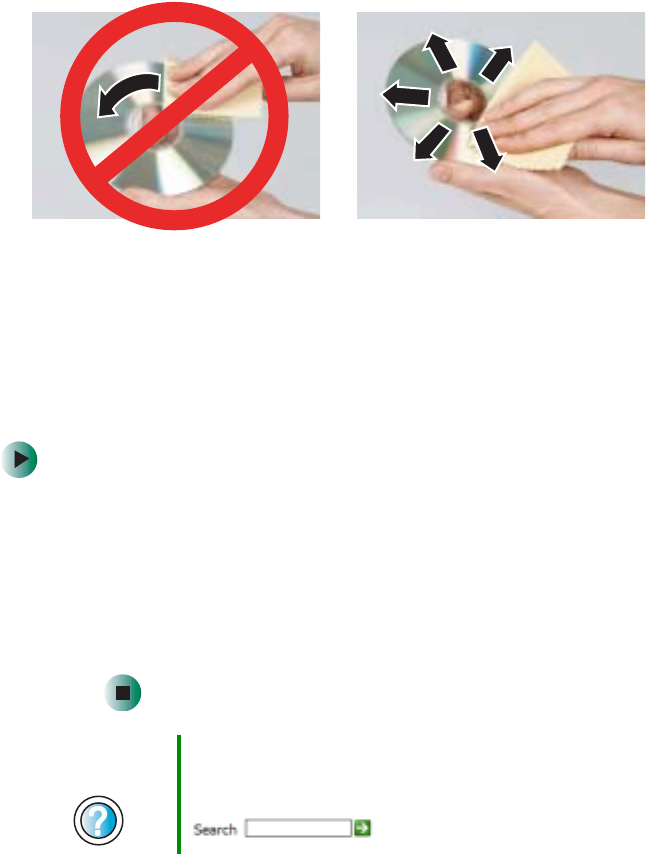
293
Troubleshooting
www.gateway.com
Cleaning CDs or DVDs
Wipe from the center to the edge, not around in a circle, using a product made
especially for the purpose.
File management
A file was accidentally deleted
If a file was deleted at a DOS prompt or in Windows while holding down the
SHIFT key, the file cannot be restored.
To restore deleted files:
1Double-click/Double-tap the Recycle Bin icon.
2Right-click/Button-tap the file you want to restore, then click/tap
Restore. The file is restored to the place where it was originally
deleted from.
If the Recycle Bin was emptied before you tried to restore a file, the
file cannot be restored.
Help and
Support For more information about restoring deleted files, click/tap
Start, then click/tap Help and Support.
Type the keyword System Restore in the Search box
, then click/tap the arrow.
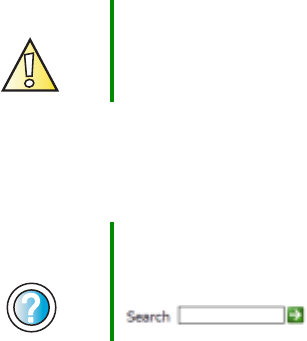
294
Chapter 17: Troubleshooting
www.gateway.com
Hard drive
You see an “Insufficient disk space” error message
■Delete unnecessary files from the hard drive using Disk Cleanup. For more
information, see “Using Disk Cleanup” on page 237.
■Empty the Recycle Bin by right-clicking/button-tapping the Recycle Bin
icon, then clicking/tapping Empty Recycle Bin.
■Save your files to a diskette or another drive. If the hard drive is full, copy
any files not regularly used to diskettes or other backup media, then delete
them from the hard drive.
You see a “Data error” message
This may be the result of a defective area on the hard drive. To fix hard drive
problems, run the Error checking program. For more information, see
“Checking the hard drive for errors” on page 238.
The hard drive cannot be accessed, or you see a “General failure
reading drive C” error message
■If a diskette is in the diskette drive, eject it and restart your convertible
tablet PC.
■Make sure that the hard drive is installed correctly. Remove it, firmly
reinsert it, then restart your convertible tablet PC. For more information,
see “Replacing the hard drive kit” on page 273.
■If your convertible tablet PC has been subjected to static electricity or
physical shock, you may need to reinstall the operating system.
Caution All deleted files will be lost when you empty the Recycle
Bin.
Help and
Support For more information about file management, click/tap
Start, then click/tap Help and Support.
Type the keyword file management in the Search box
, then click/tap the arrow.
295
Troubleshooting
www.gateway.com
You see a “Non-system disk”, “NTLDR is missing”, or “disk” error
message
■Eject the diskette from the diskette drive, then press ENTER.
Interface/Ports
The buttons on the convertible tablet PC’s LCD panel do not do what
they are supposed to
■The button functions have been changed. Reset button functions in the
Buttons tab of the Tablet and Pen Settings dialog box. For more information,
see “Programming the buttons” on page 201.
The convertible tablet PC does not recognize the PC Card
■The card is incorrectly inserted. Eject the card and re-insert it with the label
side up. For more information, see “Adding and removing a PC Card” on
page 258.
The convertible tablet PC does not recognize a USB or 1394 peripheral
device
■The peripheral device is not connected to the convertible tablet PC
correctly. Check the connection cable, and be sure it is inserted in the
correct port on the convertible tablet PC and the peripheral device.
■The correct driver is not built into Windows XP. Use the device’s
installation CD or check the manufacturer’s Web site for the correct driver.
Internet
You cannot connect to the Internet
■Make sure that the modem cable is plugged into the modem jack and not
the Ethernet network jack. See “Right Side” on page 5 to make sure that
the connections have been made correctly.
■Make sure that your convertible tablet PC is connected to the telephone
line and the telephone line has a dial tone.
■If you have the call waiting feature on your telephone line, make sure that
it is disabled.
■Make sure that you are not using a digital, rollover, or PBX line. These lines
do not work with your modem.
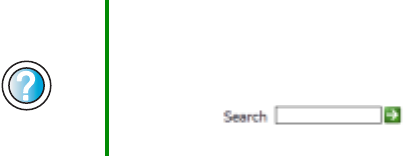
296
Chapter 17: Troubleshooting
www.gateway.com
■Make sure that your account with your Internet service provider (ISP) is
set up correctly. Contact your ISP technical support for help.
■Make sure that you do not have a problem with your modem. For more
information, see “Modem (dial-up)” on page 298
You see an “Unable to locate host” message and are unable to browse
the Internet
This problem can occur when you have typed a URL (Web address) incorrectly,
you have lost your Internet connection, or your ISP is having technical
difficulties.
Double-check the URL or try a different URL. If the error message still appears,
disconnect from the ISP connection and close your browser, then reconnect
and open the browser. If you still get the error, your ISP may be having technical
difficulties.
Connecting to a Web site takes too long
Many factors can affect Internet performance:
■The condition of the telephone lines in your residence or at your local
telephone service
■The condition of the Internet computers to which you connect and
the number of users accessing those computers
■The complexity of graphics and multimedia on Web pages
■Having multiple Web browsers open, performing multiple downloads, and
having multiple programs open on your convertible tablet PC
People are sending you e-mail messages, but you have not received
any mail
■Click/Tap the receive button in your e-mail program.
■Make sure that your account with your Internet service provider (ISP) is
set up correctly. Contact your ISP for technical support.
Help and
Support For more information about troubleshooting Internet
connections, click/tap Start, then click/tap Help and
Support.
Type the keyword troubleshooting connections in the
Search box , then click/tap the
arrow.
297
Troubleshooting
www.gateway.com
Keyboard
The built-in keyboard does not work
■Attaching a PS/2 keyboard to your port replicator while your convertible
tablet PC is running may deactivate the built-in keyboard.
The external keyboard does not work
■Make sure that the keyboard cable is plugged in correctly.
■Remove all extension cables and switchboxes.
■Clean the keyboard by using an aerosol can of air with a narrow, straw-like
extension to remove dust and lint trapped under the keys.
■Try a keyboard that you know works to make sure that the keyboard port
works.
■If you spilled liquid in the keyboard, turn off your convertible tablet PC
and unplug the keyboard. Clean the keyboard and turn it upside down to
drain it. Let the keyboard dry before using it again. If the keyboard does
not work after it dries, you may need to replace it.
A keyboard character keeps repeating or you see a “Keyboard stuck”
or “Key failure” error message
■Make sure that nothing is resting on the keyboard.
■Make sure that a key is not stuck. Press each key to loosen a key that might
be stuck, then restart your convertible tablet PC.
Memory
You see a “Memory error” message
■Make sure that the memory modules are inserted correctly in the memory
bay slots. For more information, see “Adding or replacing memory” on
page 261.
■Use PC Doctor or a third-party diagnostic program to help determine if a
memory module is failing. For more information, see “Adding or replacing
memory” on page 261.
You see a “Not enough memory” error message
■Close all programs, then restart your convertible tablet PC.
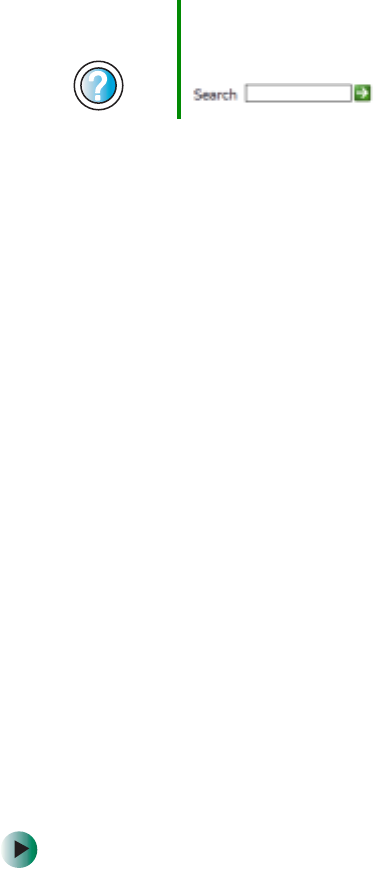
298
Chapter 17: Troubleshooting
www.gateway.com
Memory card reader
Drive letter for the memory card slot does not appear in the My
Computer window
■Reboot your convertible tablet PC.
Modem (dial-up)
Your modem does not dial or does not connect
■Make sure that the modem cable is plugged into the modem jack and not
the Ethernet network jack. See “Right Side” on page 5 to make sure that
the connections have been made correctly.
■Make sure that your convertible tablet PC is connected to the telephone
line and the telephone line has a dial tone.
■Make sure that the modem cable is less than 6 feet (1.8 meters) long.
■Remove any line splitters or surge protectors from your telephone line,
then check for a dial tone by plugging a working telephone into the
telephone wall jack.
■If you have additional telephone services such as call waiting, call
messaging, or voice mail, make sure that all messages are cleared and call
waiting is disabled before using the modem. Contact your telephone
service to get the correct code to temporarily disable the service. Also make
sure that the modem dialing properties are set appropriately.
To check the dialing properties:
1Click/Tap Start, then click/tap Control Panel. The Control Panel
window opens. If your Control Panel is in Category View, click/tap
Printers and Other Hardware.
2Click/Double-click/Tap/Double-tap the Phone and Modem Options
icon, then click/tap the Dialing Rules tab.
Help and
Support For more information about troubleshooting memory
errors, click/tap Start, then click/tap Help and Support.
Type the keyword memory error in the Search box
, then click/tap the arrow.
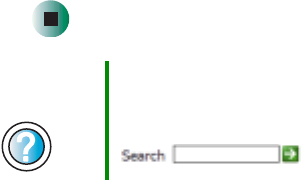
299
Troubleshooting
www.gateway.com
3Click/Tap the location from which you are dialing, then click/tap
Edit.
4Make sure that all settings are correct.
■Disconnect any answering machine, fax machine, or printer that is on the
same line as the modem. Do not connect these devices to the same
telephone line as the modem.
■Make sure that you are not using a digital, rollover, or PBX line. These lines
do not work with your modem.
■Check for line noise (scratchy, crackling, or popping sounds). Line noise
is a common problem that can cause the modem to connect at a slower
rate, abort downloads, or even disconnect. The faster the modem, the less
line noise it can tolerate and still work correctly.
Listen to the line using your telephone. Dial a single number (such as 1).
When the dial tone stops, listen for line noise. Wiggle the modem cable
to see if that makes a difference. Make sure that the connectors are free
from corrosion and all screws in the wall or telephone wall jack are secure.
You can also call your telephone service and have the telephone line
checked for noise or low line levels.
■Try another telephone line (either a different telephone number in your
house or a telephone line at a different location). If you can connect on
this line, call your telephone service.
■Try connecting with the modem at a lower connection speed. If reducing
the connect speed lets you connect, call your telephone service. The
telephone line may be too noisy.
You cannot connect to the Internet
■The ISP may be having technical difficulties. Contact your ISP for technical
support.
■See if the modem works with a different communications program. The
problem may be with just one program.
Help and
Support For more information about dialing properties, click/tap
Start, then click/tap Help and Support.
Type the keyword dialing in the Search box
, then click/tap the arrow.

300
Chapter 17: Troubleshooting
www.gateway.com
Your 56K modem does not connect at 56K
Current FCC regulations restrict actual data transfer rates over public telephone
lines to 53K. Other factors, such as line noise, telephone service provider
equipment, or ISP limitations, may lower the speed even further.
If your convertible tablet PC has a v.90 modem, the speed at which you can
upload (send) data is limited to 33.6K. If your convertible tablet PC has a v.92
modem, the speed at which you can upload data is limited to 48K. Your ISP
may not support 48K uploads.
You can check modem connection speeds and dial-up network (DUN)
connections by accessing the gateway.your.way dial-up server. The server also
contains drivers, patches, and updates for current Gateway hardware and
software.
The server provides a secure connection and is a stand-alone server. You cannot
use it to access the Internet. The server cannot be accessed Mondays from
8:00 a.m. to 12:00 p.m. CT.
To access the gateway.your.way dial-up server:
1Insert the red Drivers and Applications CD into the DVD or
DVD/CD-RW drive.
2Click/Tap Help, then click/tap Support Web Site.
3To check your modem connection speed, click/tap the Direct Dial
option. After your modem connects, move the mouse pointer over
the Dial-Up Networking icon (located next to the clock on your
taskbar). Your modem connection speed appears.
Your fax communications program only sends and receives faxes at
14,400 bps when you have a 56K modem
Current fax technology only supports a maximum send and receive rate of
14,400 bps.
The modem is not recognized by your convertible tablet PC
■Make sure that the line connected to the modem is working and plugged
into the appropriate port on your convertible tablet PC. See “Right Side”
on page 5 to make sure that the connections have been made correctly.
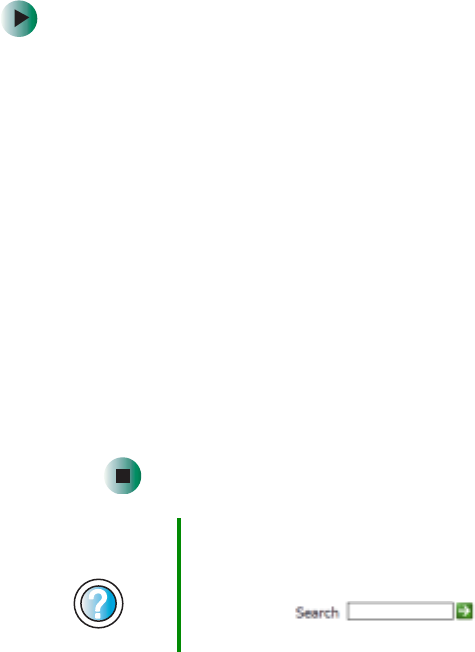
301
Troubleshooting
www.gateway.com
■If the modem shares the telephone line with another device, make sure
that the telephone line is not in use (for example, someone is on the
telephone, or another modem is in use).
■Use the modem cable that came with your convertible tablet PC. Some
telephone cables do not meet required cable standards and may cause
problems with the modem connection.
■Shut down and restart your convertible tablet PC.
■Run Windows modem diagnostics.
To run modem diagnostics:
1Close all open programs.
2Click/Tap Start, then click/tap Control Panel. The Control Panel
window opens. If your Control Panel is in Category View, click/tap
Printers and Other Hardware.
3Click/Double-click/Tap/Double-tap the Phone and Modem Options
icon, then click/tap the Modems tab.
4Click/Tap your modem, then click/tap Properties. The Modem
Properties dialog box opens.
5Click/Tap the Diagnostic tab, then click/tap Query Modem. If
information about the modem appears, the modem passed
diagnostics. If no modem information is available, a white screen
appears with no data, or if you get an error such as port already open
or the modem has failed to respond, the modem did not pass
diagnostics.
Help and
Support For more information about modem troubleshooting,
click/tap Start, then click/tap Help and Support.
Type the keyword modem troubleshooting in the
Search box , then click/tap the
arrow.

302
Chapter 17: Troubleshooting
www.gateway.com
The modem is noisy when it dials and connects
When your modem tries to connect to another modem, it begins handshaking.
Handshaking is a digital “getting acquainted” conversation between the two
modems that establishes connection speeds and communication protocols. You
may hear unusual handshaking sounds when the modems first connect. If the
handshaking sounds are too loud, you can turn down the modem volume.
To turn down the modem volume:
1Click/Tap Start, then click/tap Control Panel. The Control Panel
window opens. If your Control Panel is in Category View, click/tap
Printers and Other Hardware.
2Click/Double-click/Tap/Double-tap the Phone and Modem Options
icon, then click/tap the Modems tab.
3Click/Tap the modem you want to adjust, then click/tap Properties.
4Click/Tap the Modem tab, then adjust the Speaker volume control.
5Click/Tap OK twice to close the Phone and Modem Options dialog box.
Mouse
The external mouse does not work
■Make sure that the mouse cable is plugged in correctly.
■Shut down and restart your convertible tablet PC.
■Remove all extension cables and switch boxes.
■Try a mouse you know is working to make sure that the mouse port works.
The external mouse works erratically
■Clean the mouse. For more information, see “Cleaning the mouse” on
page 245.
■Some mouse pad patterns “confuse” optical mice. Try the mouse on a
different surface.
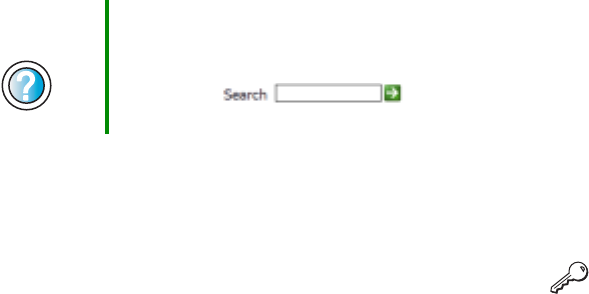
303
Troubleshooting
www.gateway.com
Networks
You cannot connect to your company network
Every network is unique. Contact your company computer department or
network administrator for help.
Operating system
The program I am working in has stopped responding but the cursor
moves and other programs work
■The program has crashed. Press the Windows Security button on the
convertible tablet PC’s LCD panel to open the Task Manager and close the
non-responsive program.
-OR-
Press CTRL+ALT+DEL to open the Task Manager and close the
non-responsive program.
The convertible tablet PC keeps showing the wrong date and time
even after resetting
■The CMOS battery on the system board may need to be replaced. Contact
Gateway technical support.
The convertible tablet PC seems to be operating more slowly than
usual
■The hard drive is full or nearly full. Run the Disk Cleanup utility to clear
out unnecessary and temporary files, and remove unneeded programs and
files. For more information, see “Using Disk Cleanup” on page 237.
■The hard drive needs defragmenting. Run Disk Defragmenter to
consolidate files and folders on the hard drive. For more information, see
“Defragmenting the hard drive” on page 240.
Help and
Support For more information about network troubleshooting,
click/tap Start, then click/tap Help and Support.
Type the keyword network troubleshooting in the
Search box , then click/tap the
arrow.
304
Chapter 17: Troubleshooting
www.gateway.com
■The convertible tablet PC is in Portrait or Secondary Landscape orientation.
Though changing the orientation should not slow the convertible
tablet PC considerably, try changing back to Primary Landscape
orientation.
Passwords
Your convertible tablet PC does not accept your password
Make sure that CAPS LOCK and PAD LOCK are turned off, then retype the
password.
You forgot your startup password
The password feature (which is set in the BIOS Setup utility) is very secure, with
no easy way to recover a forgotten password. You must return your convertible
tablet PC for repair. Call Gateway Technical Support for instructions.
PC Cards
You installed a PC Card and now your convertible tablet PC is having
problems
■The card is incorrectly inserted. Eject the card and re-insert it with the label
side up. For more information, see “Adding and removing a PC Card” on
page 258.
■Make sure that you have correctly installed required software for the
PC Card. For more information, see your PC Card’s documentation.
■Make sure that the PC Card you installed is not causing a system resource
conflict. For more information on resource conflicts, see “Device
installation” on page 288.
Pen
The convertible tablet PC does not respond to the pen
■You are not using the correct pen. Use only Penabled digitizer pens by
Wacom such as your convertible tablet PC’s pen. The convertible tablet PC
does not respond to some other tablet pens or plastic pens.
305
Troubleshooting
www.gateway.com
The pen tip does not line up with the pointer when I tap the screen
■The pen and display need recalibrating in both Landscape and Portrait
mode. Recalibrate through the Pen Settings tab of the Tablet and Pen Settings
dialog box. For more information, see “Adjusting tablet and pen settings”
on page 200.
Power
Your convertible tablet PC is not working on AC power
■Make sure that your AC power adapter is connected correctly to your
convertible tablet PC. For more information, see “Connecting the
AC adapter” on page 19.
■If your convertible tablet PC is plugged into a surge protector, make sure
that the surge protector is connected securely to an electrical outlet, turned
on, and working correctly. To test the outlet, plug a working device, such
as a lamp, into the outlet and turn it on.
■Make sure that the AC power adapter cables are free from cuts or damage.
Replace any damaged cables.
Your convertible tablet PC is not working on battery power
■Make sure that the battery is installed correctly. For more information, see
“Replacing the main battery” on page 172.
■Make sure that the optional secondary battery is installed correctly. For
more information, see “Installing a secondary battery” on page 174.
■Make sure that the batteries are fully recharged. For more information, see
“Recharging the battery” on page 169.
■Make sure that the battery is calibrated correctly. For more information,
see “Recalibrating the battery” on page 170.
Your convertible tablet PC will not turn off, even after sliding and
holding the power switch for five seconds
If your convertible tablet PC has “frozen,” and sliding and holding the power
switch for five seconds does not turn it off, insert a straightened paper clip into
the reset hole on the bottom of your convertible tablet PC. For the location of
the reset hole, see “Bottom” on page 7.
306
Chapter 17: Troubleshooting
www.gateway.com
The battery seems to run down very quickly
■Peripheral devices and programs that make heavy use of the hard drive
drain the battery more quickly. Use AC power whenever possible, and
readjust the Power Properties to Max Battery when AC power is unavailable.
For more information, see “Changing the power scheme” on page 179.
■The battery is weakening or defective. All batteries run down in time, but
if a new battery appears to be defective, contact Gateway about replacing it.
The convertible tablet PC will not turn on
■The Power switch has not been fully engaged. Slide and hold the Power
switch for at least a half-second, but no more than three seconds.
■The battery is fully discharged but AC power is not connected. Connect
the AC adapter to power the convertible tablet PC and charge the battery.
The convertible tablet PC turns on and the hard drive status indicator
flashes, but nothing appears on the display
■Display brightness is set too low. For more information, see “Adjusting
brightness” on page 192.
The convertible tablet PC will not enter Hibernate mode
■Hibernate mode is not activated. For more information, see “Activating and
using Hibernate mode” on page 182.
The convertible tablet PC will not come out of Standby or Hibernate
mode when running on battery power.
■The battery fully discharged and AC power is not connected. Connect the
AC power adapter to power the convertible tablet PC and charge the
battery.
The display goes black while the convertible tablet PC is still turned
on
■Convertible tablet PC has gone into Standby after sitting idle (power status
indicator is blinking blue). Slide and hold the Power switch for about a
second to resume operations.
■Convertible tablet PC has gone into low-battery Hibernate (power status
indicator is blinking blue). Slide and hold the Power switch for about a
second to resume operations, and charge the battery.

307
Troubleshooting
www.gateway.com
Printer
The printer will not turn on
■Make sure that the printer is online. Many printers have an online/offline
button that you may need to press.
■Make sure that the power cable is plugged into an AC power source.
The printer is on but will not print
■Check the cable between the printer and your convertible tablet PC. Make
sure that it is connected to the correct port.
■Make sure that the printer is online. Many printers have an online/offline
button that you may need to press so the printer can start printing. Press
the button to put the printer online.
■Check the port and cable for bent or broken pins.
■If the printer you want to print to is not the default printer, make sure
that you have selected it in the printer setup.
To set a default printer:
1Click/Tap Start, then click/tap Control Panel. The Control Panel
window opens. If your Control Panel is in Category View, click/tap
Printers and Other Hardware.
2Click/Double-click/Tap/Double-tap the Printers and Faxes icon. The
Printers and Faxes window opens.
3Right-click/Button-tap the name of the printer you want to be the
default printer, then click/tap Set as Default Printer.
■Reinstall the printer driver. See the guide that came with your printer for
instructions on installing the printer driver.
You see a “Printer queue is full” error message
■Make sure that the printer is not set to work offline.
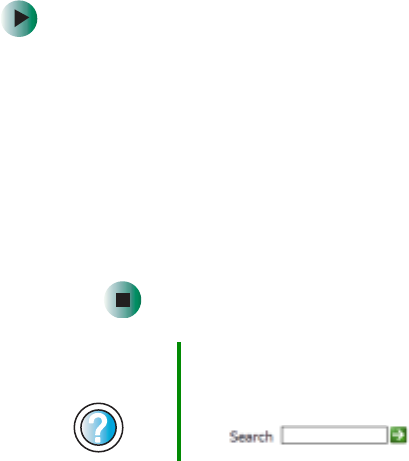
308
Chapter 17: Troubleshooting
www.gateway.com
To make sure that the printer is not set to work offline:
1Click/Tap Start, then click/tap Control Panel. The Control Panel
window opens. If your Control Panel is in Category View, click/tap
Printers and Other Hardware.
2Click/Double-click/Tap/Double-tap the Printers and Faxes icon. The
Printers and Faxes window opens.
3Right-click/Button-tap the name of the printer you want to use. If
the menu shows a check mark next to Use Printer Offline, click/tap
Use Printer Offline to clear the check mark.
■Wait until files have been printed before sending additional files to the
printer.
■If you print large files or many files at one time, you may want to add
additional memory to the printer. See the printer documentation for
instructions for adding additional memory.
You see a “Printer is out of paper” error message
After adding paper, make sure that the printer is online. Most printers have an
online/offline button that you need to press after adding paper.
Sound
You are not getting sound from the built-in speakers
■Make sure that headphones are not plugged into the headphone jack. For
the location of the headphone jack, see “Left Side” on page 3 and “Back”
on page 280.
■Make sure that the volume control on your convertible tablet PC is turned
up. For more information, see “System key combinations” on page 30.
■Make sure that the Windows volume control is turned up. For more
information, see “Adjusting the volume” on page 102.
Help and
Support For more information about printer troubleshooting,
click/tap Start, then click/tap Help and Support.
Type the keyword printer troubleshooter in the Search
box , then click/tap the arrow.
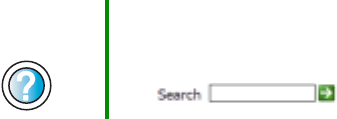
309
Troubleshooting
www.gateway.com
■Make sure that Mute controls are turned off. For more information about
the mute setting, see “System key combinations” on page 30 or “Adjusting
the volume” on page 102.
Touchpad
The touchpad does not work.
Attaching a PS/2 mouse to your port replicator may deactivate the touchpad.
Video
The external monitor is not working
■Make sure that you have pressed FN+LCD/CRT to activate the external
monitor option.
■Make sure that the monitor is turned on and that the video cable is
connected correctly.
TV out is not working
■Make sure that you have activated TV out. For more information, see
“Viewing the display on a television” on page 162.
■Make sure that the television is turned on and that the S-Video cable is
connected correctly.
■Televisions in different countries use different standards. If you are
traveling, you may need to change the TV Out mode. For more
information, see “Viewing the display on a television” on page 162.
Help and
Support For more information about troubleshooting sound issues,
click/tap Start, then click/tap Help and Support.
Type the keyword sound troubleshooter in the Search
box , then click/tap the arrow.
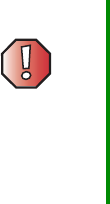
310
Chapter 17: Troubleshooting
www.gateway.com
Telephone support
Before calling Gateway Technical Support
If you have a technical problem with your convertible tablet PC, follow these
recommendations before contacting Gateway Technical Support:
■Make sure that your convertible tablet PC is connected correctly to a
grounded AC outlet that is supplying power. If you use a surge protector,
make sure that it is turned on.
■If a peripheral device, such as a keyboard or mouse, does not appear to
work, make sure that all cables are plugged in securely.
■If you have recently installed hardware or software, make sure that you
have installed it according to the instructions provided with it. If you did
not purchase the hardware or software from Gateway, see the
manufacturer’s documentation and technical support resources.
■If you have “how to” questions about using a program, see:
■Online Help
■Printed documentation
■The Microsoft Windows documentation
■The software publisher’s Web site
■See the troubleshooting section of this chapter.
■Have your customer ID, serial number, and order number available, along
with a detailed description of your problem, including the exact text of
any error messages, and the steps you have taken.
■Make sure that your convertible tablet PC is nearby at the time of your
call. The technician may have you follow troubleshooting steps.
Warning To avoid bodily injury, do not attempt to troubleshoot your
convertible tablet PC problem if:
■Power cords or plugs are damaged
■Liquid has been spilled into your convertible tablet PC
■Your convertible tablet PC was dropped
■The case was damaged
Instead, unplug your convertible tablet PC and contact a
qualified computer technician.

311
Telephone support
www.gateway.com
Telephone numbers
Gateway offers a wide range of customer service, technical support, and
information services.
Automated troubleshooting system
Telephone numbers
You can access the following services through your telephone to get answers
to your questions:
Service description How to reach
Use an automated menu system and your telephone
keypad to find answers to common problems. 800-846-2118 (US)
877-709-2945 (Canada)
Resource Service description How to reach
Fax on demand
support Order a catalog of documents on common
problems, then order documents by document
numbers. The documents will be faxed to you.
800-846-4526 (US)
877-709-2951 (Canada)
Gateway’s
fee-based
software tutorial
service
Get tutorial assistance for software issues
billed by the minute. 800-229-1103 (charged to
your credit card)
900-555-4695 (charged to
your telephone bill)
Gateway
Technical Support Talk to a Gateway Technical Support
representative about a non-tutorial technical
support question. (See “Before calling
Gateway Technical Support” on page 310
before calling.)
TDD Technical Support (for hearing impaired)
is available:
Weekdays 6:00 a.m. - 8:00 p.m. Central Time
Weekends 6:00 a.m. - 5:00 p.m. Central Time
800-846-2301 (US)
800-846-3609 (Canada
and Puerto Rico)
605-232-2191
(all other countries)
800-846-1778 (TDD)
America Online Get support for your America Online ISP
account 800-827-6364 (US)
888-265-4357 (Canada)
CompuServe Get support for your CompuServe ISP account 800-848-8990 (US)
Sales,
accounting, and
warranty
Get information about available systems,
pricing, orders, billing statements, warranty
service, or other non-technical issues.
800-846-2000 (US)
888-888-2037 (Canada)
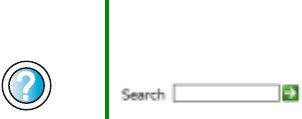
312
Chapter 17: Troubleshooting
www.gateway.com
Tutoring and training
Gateway’s Technical Support professionals cannot provide hardware and
software training or tutorial services. Instead, Gateway recommends the
following tutoring and training resources.
Self-help
If you have how-to questions about using your Gateway-supplied hardware or
software, see the following resources:
■The printed or online documentation that came with your hardware or
software. In many cases, additional product information and online
documentation for Gateway-supplied hardware can be found in our Web
site’s Documentation Library
■This user’s guide
■The software publisher’s Web site
Tutoring
For help on using hardware or software that came with your Gateway
convertible tablet PC, contact Gateway’s fee-based tutorial hotline:
■800-229-1103 (rate charged per minute; charged to a major credit card)
■900-555-4695 (rate charged per minute; charged to your telephone bill)
Help and
Support For more how-to information about Windows XP, click/tap
Start, then click/tap Help and Support.
Type the keyword practice in the Search box
, then click/tap the arrow.

313
Tutoring and training
www.gateway.com
Training
Gateway provides the following in-person and computerized training:
Resource Service description For more information
In-Store Training at
Gateway stores Our friendly and knowledgeable software
trainers can teach you how to use the
Internet and the most popular software
programs, including Microsoft Word, Excel,
and PowerPoint.
www.gateway.com/store
Gateway Learning
Libraries A variety of courses and tutorials are
available on CD. Select from several
easy-to-use learning libraries.
www.gateway.com/training
Online Training
from
Learn@Gateway
More than 450 online courses are available
from Learn@Gateway. All you have to do is
go online and log in. You select the subject
matter, and the learning format (self-paced
tutorials or virtual classrooms), all from the
comfort of your convertible tablet PC.
www.learnatgateway.com/
314
Chapter 17: Troubleshooting
www.gateway.com
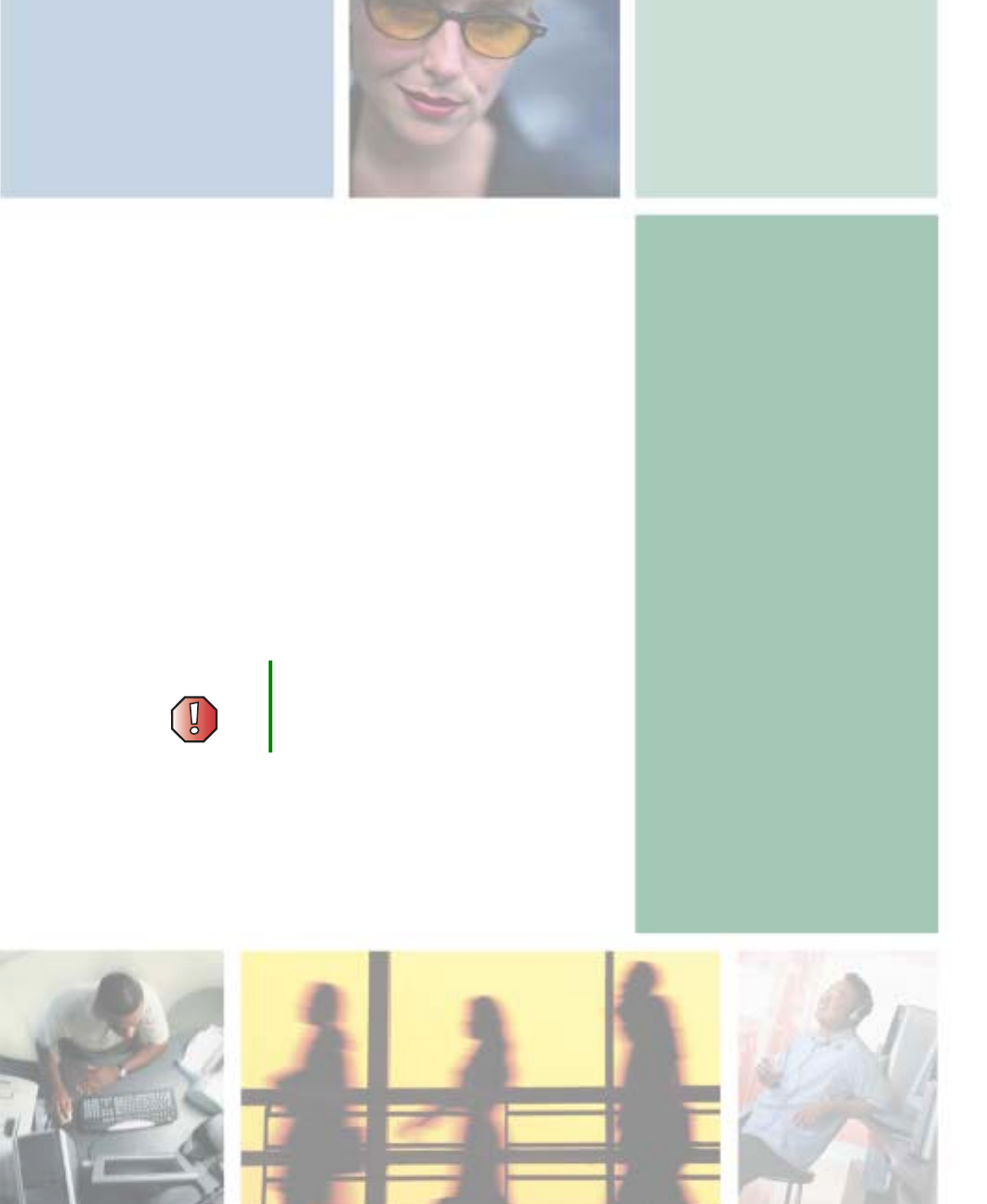
A
315
Safety,
Regulatory, and
Legal Information
Important safety
information
Your Gateway system is designed and tested to meet the latest standards
for safety of information technology equipment. However, to ensure safe
use of this product, it is important that the safety instructions marked on
the product and in the documentation are followed.
Warning Always follow these instructions to help
guard against personal injury and damage
to your Gateway system.
316
Appendix A: Safety, Regulatory, and Legal Information
www.gateway.com
Setting up your system
■Read and follow all instructions marked on the product and in the documentation before you
operate your system. Retain all safety and operating instructions for future use.
■Do not use this product near water or a heat source such as a radiator.
■Set up the system on a stable work surface.
■The product should be operated only from the type of power source indicated on the rating label.
■If your computer has a voltage selector switch, make sure that the switch is in the proper position
for your area. The voltage selector switch is set at the factory to the correct voltage.
■Openings in the computer case are provided for ventilation. Do not block or cover these
openings. Make sure you provide adequate space, at least 6 inches (15 cm), around the system for
ventilation when you set up your work area. Never insert objects of any kind into the computer
ventilation openings.
■Some products are equipped with a three-wire power cord to make sure that the product is
properly grounded when in use. The plug on this cord will fit only into a grounding-type outlet.
This is a safety feature. If you are unable to insert the plug into an outlet, contact an electrician
to install the appropriate outlet.
■If you use an extension cord with this system, make sure that the total ampere rating on the
products plugged into the extension cord does not exceed the extension cord ampere rating.
■If your system is fitted with a TV Tuner, cable, or satellite receiver card, make sure that the
antenna or cable system is electrically grounded to provide some protection against voltage
surges and buildup of static charges.
Care during use
■Do not walk on the power cord or allow anything to rest on it.
■Do not spill anything on the system. The best way to avoid spills is to avoid eating and drinking
near your system.
■Some products have a replaceable CMOS battery on the system board. There is a danger of
explosion if the CMOS battery is replaced incorrectly. Replace the battery with the same or
equivalent type recommended by the manufacturer. Dispose of batteries according to the
manufacturer’s instructions.
■When the computer is turned off, a small amount of electrical current still flows through the
computer. To avoid electrical shock, always unplug all power cables and modem cables from the
wall outlets before cleaning the system.
■Unplug the system from the wall outlet and refer servicing to qualified personnel if:
■The power cord or plug is damaged.
■Liquid has been spilled into the system.
■The system does not operate properly when the operating instructions are followed.
■The system was dropped or the cabinet is damaged.
■The system performance changes.
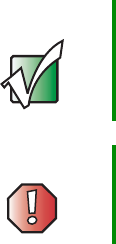
317
Important safety information
www.gateway.com
Replacement parts and accessories
Use only replacement parts and accessories recommended by Gateway.
Important Do not use Gateway products in areas classified as
hazardous locations. Such areas include patient care
areas of medical and dental facilities, oxygen-laden
environments, or industrial facilities.
Warning To reduce the risk of fire, use only No. 26 AWG or larger
telecommunications line cord.

318
Appendix A: Safety, Regulatory, and Legal Information
www.gateway.com
Regulatory compliance
statements
Wireless Guidance
Low power, Radio transmitting type devices (radio frequency (RF) wireless communication
devices), may be present (embedded) in your notebook system. These devices may operate in the
2.4 GHz (i.e. 802.11B/G LAN & Bluetooth), 5.2 GHz (i.e. 802.11A LAN), and traditional cellular or
PCS cellular bands (i.e. Cellular data modem). The following section is a general overview of
considerations while operating a wireless device.
Additional limitations, cautions, and concerns for specific countries are listed in the specific
country sections (or country group sections). The wireless devices in your system are only qualified
for use in the countries identified by the Radio Approval Marks on the system rating label. If the
country you will be using the wireless device in, is not listed, please contact your local Radio
Approval agency for requirements. Wireless devices are closely regulated and use may not be
allowed.
The power output of the wireless device or devices that may be embedded in your notebook is well
below the RF exposure limits as known at this time. Because the wireless devices (which may be
embedded into your notebook) emit less energy than is allowed in radio frequency safety standards
and recommendations, Gateway believes these devices are safe for use. Regardless of the power
levels, care should be taken to minimize human contact during normal operation.
The wireless devices installed in this system are intended to be used indoors. In some areas, use of
these devices outdoors is prohibited.
Some circumstances require restrictions on wireless devices. Examples of common restrictions are
listed below:
Warning Radio frequency wireless communication can interfere
with equipment on commercial aircraft. Current aviation
regulations require wireless devices to be turned off while
traveling in an airplane. 802.11B (also known as wireless
Ethernet or Wifi) and Bluetooth communication devices are
examples of devices that provide wireless communication.
Warning In environments where the risk of interference to other
devices or services is harmful or perceived as harmful, the
option to use a wireless device may be restricted or
eliminated. Airports, Hospitals, and Oxygen or flammable
gas laden atmospheres are limited examples where use
of wireless devices may be restricted or eliminated. When
in environments where you are uncertain of the sanction
to use wireless devices, ask the applicable authority for
authorization prior to use or turning on the wireless device.

319
Regulatory compliance statements
www.gateway.com
Warning Every country has different restrictions on the use of
wireless devices. If your system is equipped with a
wireless device, when traveling between countries with
your system, check with the local Radio Approval
authorities prior to any move or trip for any restrictions on
the use of a wireless device in the destination country.
Warning If your system came equipped with an internal embedded
wireless device, do not operate the wireless device unless
all covers and shields are in place and the system is fully
assembled.
Warning Wireless devices are not user serviceable. Do not modify
them in any way. Modification to a wireless device will void
the authorization to use it. Please contact Gateway for
service.
Warning Only use drivers approved for the country in which the
device will be used. See the Gateway System Restoration
Kit, or contact Gateway Technical Support for additional
information.
Warning In order to comply with FCC requirements transmitters
must not be operated (or co-located) in conjunction with
any other transmitter or antenna installed in the convertible
tablet PC.
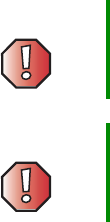
320
Appendix A: Safety, Regulatory, and Legal Information
www.gateway.com
United States of America
Federal Communications Commission (FCC)
Intentional emitter per FCC Part 15
Low power, Radio transmitter type devices (radio frequency (RF) wireless communication devices),
operating in the 2.4 GHz band and/or 5.15 – 5.35 GHz band, may be present (embedded) in your
notebook system. This section is only applicable if these devices are present. Refer to the system
label to verify the presence of wireless devices.
Wireless devices that may be in your system are only qualified for use in the United States of
America if an FCC ID number is on the system label.
This equipment complies with FCC radio frequency electromagnetic signal (RF) exposure limits set
forth for an uncontrolled environment of a portable transmitting device.
The wireless devices installed in this system are intended to be used indoors. In some areas, use of
these devices outdoors is prohibited.
Operation of this device is subject to the following two conditions: (1) This device may not cause
harmful interference, and (2) this device must accept any interference received, including
interference that may cause undesired operation of the device.
Unintentional emitter per FCC Part 15
This device has been tested and found to comply with the limits for a Class B digital device,
pursuant to Part 15 of the FCC rules. These limits are designed to provide reasonable protection
against harmful interference in a residential installation. This equipment generates, uses, and can
radiate radio frequency energy and, if not installed and used in accordance with the instructions,
may cause harmful interference to radio or television reception. However, there is no guarantee
that interference will not occur in a particular installation. If this equipment does cause
interference to radio and television reception, which can be determined by turning the equipment
off and on, the user is encouraged to try to correct the interference by one or more of the following
measures:
■Reorient or relocate the receiving antenna
■Increase the separation between the equipment and receiver
■Connect the equipment into an outlet on a circuit different from that to which the receiver is
connected
■Consult the dealer or an experienced radio/TV technician for help.
Warning Wireless devices are not user serviceable. Do not modify
them in any way. Modification to a wireless device will void
the authorization to use it. Contact Gateway for service.
Warning The transmitting device embedded in this system may not
be used with any antenna other than provide with the
system.
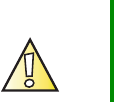
321
Regulatory compliance statements
www.gateway.com
Compliance Accessories: The accessories associated with this equipment are: shielded video cable
when an external monitor is connected. These accessories are required to be used in order to
ensure compliance with FCC rules.
FCC declaration of conformity
Responsible party:
Gateway Companies, Inc.
610 Gateway Drive, North Sioux City, SD 57049
(605) 232-2000 Fax: (605) 232-2023
Product:
■Gateway M275
This device complies with Part 15 of the FCC Rules. Operation of this product is subject to the
following two conditions: (1) this device may not cause harmful interference, and (2) this device
must accept any interference received, including interference that may cause undesired operation.
Caution Changes or modifications not expressly approved by
Gateway could void the FCC compliance and negate your
authority to operate the product.
322
Appendix A: Safety, Regulatory, and Legal Information
www.gateway.com
Telecommunications per FCC part 68
(applicable to products fitted with USA modems)
Your modem complies with Part 68 of the Federal Communications Commission (FCC) rules. On
the computer or modem card is a label that contains the FCC registration number and Ringer
Equivalence Number (REN) for this device. If requested, this information must be provided to the
telephone company.
An FCC-compliant telephone line cord with a modular plug is required for use with this device.
The modem is designed to be connected to the telephone network or premises wiring using a
compatible modular jack which is Part 68-compliant. See installation instructions for details.
The Ringer Equivalence Number (REN) is used to determine the number of devices which may be
connected to the telephone line. Excessive RENs on a telephone line may result in the devices not
ringing in response to an incoming call. In most areas, the sum of RENs should not exceed five
(5.0). To be certain of the number of devices that may be connected to a line, as determined by the
total RENs, contact the local telephone company.
If this device causes harm to the telephone network, the telephone company will notify you in
advance that temporary discontinuance of service may be required. The telephone company may
request that you disconnect the equipment until the problem is resolved.
The telephone company may make changes in its facilities, equipment, operations, or procedures
that could affect the operation of this equipment. If this happens, the telephone company will
provide advance notice in order for you to make necessary modifications to maintain
uninterrupted service.
This equipment cannot be used on telephone company-provided coin service. Connection to party
line service is subject to state tariffs. Contact the state public utility commission or public service
commission for information.
When programming or making test calls to emergency numbers:
■Remain on the line and briefly explain to the dispatcher the reason for the call.
■Perform such activities in the off-peak hours such as early morning or late evenings.
The United States Telephone Consumer Protection Act of 1991 makes it unlawful for any person to
use a computer or other electronic device to send any message via a telephone fax machine unless
such message clearly contains, in a margin at the top or bottom of each transmitted page or on the
first page of the transmission, the date and time it is sent, an identification of the business, other
entity, or other individual sending the message, and the telephone number of the sending
machine or such business, other entity, or individual. Refer to your fax communication software
documentation for details on how to comply with the fax-branding requirement.

323
Regulatory compliance statements
www.gateway.com
Canada
Industry Canada (IC)
Intentional emitter per RSS 210
Low power, Radio transmitter type devices (radio frequency (RF) wireless communication devices),
operating in the 2.4 GHz band and/or 5.15 – 5.35 GHz band, may be present (embedded) in your
notebook system. This section is only applicable if these devices are present. Refer to the system
label to verify the presence of wireless devices.
Wireless devices that may be in your system are only qualified for use in Canada if an Industry
Canada ID number is on the system label.
This equipment complies with Industry Canada radio frequency electromagnetic signal (RF)
exposure limits set forth for an uncontrolled environment of a portable transmitting device
Operation of this device is subject to the following two conditions: (1) This device may not cause
harmful interference, and (2) this device must accept any interference received, including
interference that may cause undesired operation of the device.
Warning To prevent radio interference to licensed service or
co-channel Mobile Satellite systems, this device is
intended to be operated indoors and away from windows
to provide maximum shielding. Equipment (or its transmit
antenna) that is installed outdoors is subject to licensing.
Warning Wireless devices are not user serviceable. Do not modify
them in any way. Modification to a wireless device will void
the authorization to use it. Contact Gateway for service.
Warning The transmitting device embedded in this system may not
be used with any antenna other than provide with the
system.
Warning The 802.11A radio LAN your system may have been
equipped with operates in the same frequency range as
high power radar, which has priority use, and may damage
the radio LAN if both are present and being used in the
same area.

324
Appendix A: Safety, Regulatory, and Legal Information
www.gateway.com
Unintentional emitter per ICES-003
This digital apparatus does not exceed the Class B limits for radio noise emissions from digital
apparatus as set out in the radio interference regulations of Industry Canada.
Le présent appareil numérique n’émet pas de bruits radioélectriques dépassant les limites
applicables aux appareils numériques de Classe B prescrites dans le règlement sur le brouillage
radioélectrique édicté par Industrie Canada.
Telecommunications per Industry Canada CS-03
(for products fitted with an IC-compliant modem)
The Industry Canada label identifies certified equipment. This certification means that the
equipment meets certain telecommunications network protective, operation, and safety
requirements. The Department does not guarantee the equipment will operate to the users’
satisfaction.
Before installing this equipment, users should make sure that it is permissible to be connected to
the facilities of the local telecommunications company. The equipment must also be installed
using an acceptable method of connection. In some cases, the inside wiring associated with a
single-line individual service may be extended by means of a certified connector assembly. The
customer should be aware that compliance with the above conditions may not prevent
degradation of service in some situations.
Repairs to certified equipment should be made by an authorized Canadian maintenance facility
designated by the supplier. Any repairs or alterations made by the user to this equipment, or
equipment malfunctions, may give the telecommunications company cause to request the user to
disconnect the equipment.
Users should make sure, for their own protection, that the electrical ground connections of the
power utility, telephone lines, and internal metallic water pipe system, if present, are connected
together. This precaution may be particularly important in rural areas.
The Ringer Equivalence Number (REN) assigned to each terminal device provides an indication of
the maximum number of terminals allowed to be connected to a telephone interface. The
termination on an interface may consist of any combination of devices subject only to the
requirement that the sum of the Ringer Equivalence Numbers of all the devices does not exceed 5.
Warning To avoid electrical shock or equipment malfunction do not
attempt to make electrical ground connections by yourself.
Contact the appropriate inspection authority or an
electrician, as appropriate.
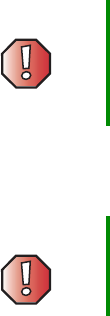
325
Regulatory compliance statements
www.gateway.com
Mexico
Intentional emitter
Low power, Radio transmitter type devices (radio frequency (RF) wireless communication devices),
operating in the 2.4 GHz band, may be present (embedded) in your notebook system. This section
is only applicable if these devices are present. Refer to the system label to verify the presence of
wireless devices.
Wireless devices that may be in your system are only qualified for use in Mexico if a COFETEL ID is
on the system label.
This equipment complies with radio frequency electromagnetic signal (RF) exposure limits for an
uncontrolled environment of a portable transmitting device.
Unintentional emitter
At this time there are no mandatory requirements for Unintentional Emitters. However, this device
does comply with multiple requirements for other countries and regions as listed on the system
label and in the user’s manual.
Laser safety statement
All Gateway systems equipped with CD and DVD drives comply with the appropriate safety
standards, including IEC 825. The laser devices in these components are classified as “Class 1 Laser
Products” under a US Department of Health and Human Services (DHHS) Radiation Performance
Standard. Should the unit ever need servicing, contact an authorized service location.
California Proposition 65 Warning
Warning Use of controls or adjustments or performance of
procedures other than those specified in this manual may
result in hazardous radiation exposure. To prevent
exposure to laser beams, do not try to open the enclosure
of a CD or DVD drive.
Warning This product contains chemicals, including lead, known to
the State of California to cause cancer and/or birth defects
or reproductive harm.

326
Appendix A: Safety, Regulatory, and Legal Information
www.gateway.com
Notices
Copyright © 2003 Gateway, Inc.
All Rights Reserved
14303 Gateway Place
Poway, CA 92064 USA
All Rights Reserved
This publication is protected by copyright and all rights are reserved. No part of it may be reproduced or
transmitted by any means or in any form, without prior consent in writing from Gateway.
The information in this manual has been carefully checked and is believed to be accurate. However, changes are
made periodically. These changes are incorporated in newer publication editions. Gateway may improve and/or
change products described in this publication at any time. Due to continuing system improvements, Gateway is
not responsible for inaccurate information which may appear in this manual. For the latest product updates,
consult the Gateway Web site at www.gateway.com. In no event will Gateway be liable for direct, indirect,
special, exemplary, incidental, or consequential damages resulting from any defect or omission in this manual,
even if advised of the possibility of such damages.
In the interest of continued product development, Gateway reserves the right to make improvements in this
manual and the products it describes at any time, without notices or obligation.
Trademark Acknowledgments
1-800-GATEWAY, ActiveCPR, ALR, AnyKey, black-and-white spot design, CrystalScan, Destination, DestiVu, EZ
Pad, EZ Point, Field Mouse, Gateway 2000, Gateway Country, gateway.net, Gateway stylized logo, Perfect
Scholar, Solo, TelePath, Vivitron, stylized “G” design, and “You’ve got a friend in the business” slogan are
registered trademarks and black-and-white spotted box logo, GATEWAY, Gateway Astro, Gateway@Work,
Gateway Connected touch pad, Gateway Connected music player, Gateway Cyber:)Ware, Gateway
Education:)Ware, Gateway Flex Case, Gateway Gaming:)Ware, Gateway GoBack, Gateway Gold, Gateway
Learning:)Ware, Gateway Magazine, Gateway Micro Server, Gateway Money:)Ware, Gateway Music:)Ware,
Gateway Networking Solutions, Gateway Online Network (O.N.) solution, Gateway Photo:)Ware, Gateway
Professional PCs, Gateway Profile, Gateway Solo, green stylized GATEWAY, green stylized Gateway logo,
Gateway Teacher:)Ware, Gateway Video:)Ware, HelpSpot, InforManager, Just click it!, Learn@Gateway, Kids
BackPack, SERVE-TO-ORDER, Server Watchdog, the Spotted G Gateway Logo and the Spotted G Logo,
SpotShop, Spotshop.com, and Your:)Ware are trademarks of Gateway, Inc. Intel, Intel Inside logo, and Pentium
are registered trademarks and MMX is a trademark of Intel Corporation. Microsoft, MS, MS-DOS, and Windows
are trademarks or registered trademarks of Microsoft Corporation. All other product names mentioned herein are
used for identification purposes only, and may be the trademarks or registered trademarks of their respective
companies.
Macrovision statement
If your computer has a DVD drive and an analog TV Out port, the following paragraph applies:
This product incorporates copyright protection technology that is protected by method claims of certain U.S.
patents and other intellectual property rights owned by Macrovision Corporation and other rights owners. Use of
this copyright protection technology must be authorized by Macrovision Corporation, and is intended for home
and other limited viewing uses only unless otherwise authorized by Macrovision Corporation. Reverse
engineering or disassembly is prohibited.
327
Index
A
AC adapter
connecting 19
connector 6, 280
damaged 19
defective 20
international adapters 176
troubleshooting 306
AC-3 digital audio jack 280
access point network 216
accessories
purchasing 13
safety precautions 317
accounts
America Online 81
ISP 81
user 205
acoustic handset coupler 186
ad hoc networking 218, 219
adding
icons to desktop 61
user accounts 205
See also installing
address
e-mail 86
Web 84
airplane power adapter 13
alarms 178, 180
America Online 82
application key 28, 29
arrow keys 28, 29
AU file 107
audio
adjusting volume 31
digital jack 280
headphone jack 4, 280
microphone jack 3, 8, 280
muting 31, 102
playing 105, 107, 108, 114
recording 105
streaming 209
troubleshooting 308
volume down button 31
volume up button 31
audio CD
adding tracks to library 121
copying 134
creating 130
editing track information 120
playing with MusicMatch 116
See CD
audio file
streaming 209
automobile power adapter 13
AVI file 107
B
background 197
backing up files 152, 242
battery 13
alarm options 178, 180
alternate power sources 176
bay 7, 172
changing 172
charge indicator 20, 26, 168
charge status 168
charging 19, 169
conserving power 176
icons 168
installing 172
installing secondary 174
latch 7
managing power 176
monitoring charge 168
recalibrating 170
recharging 19, 169
release latch 7
safety guidelines 17
secondary 2, 174
storing 230
328
bays
battery 7, 172
CD drive 2, 110
diskette drive 110
DVD drive 2, 110
DVD/CD-RW drive 2, 110
DVD-RW/CD-RW drive 2, 110
hard drive 7, 273
memory 7, 261
memory card reader 110
module 2, 110
second hard drive 2, 110
secondary battery 174
BIOS Setup utility 170, 188
break system key 30
brightness
adjusting 192
brightness system keys 28, 30, 31
broadband Internet connection 49, 80,
208
browser
Web 81, 83
browsing for files and folders 70
buttons
programming 201
security 303
setting functions 295
button-tapping 41
C
cable lock
convertible tablet PC 3, 5, 278
port replicator 284
using while traveling 188
cable modem 49, 80, 212, 216
calibrating 42, 305
camera
See digital camera
See digital video camera
Caps Lock indicator 27
capturing video 158
cards
adding memory card 155
adding PC Card 258
inserting memory card 155
inserting PC Card 258
installing memory card 155
installing PC Card 258
memory card slots 3, 154
PC Card eject button 259
PC Card slot 3
reinstalling PC Card 258
removing memory card 155
removing PC Card 258
replacing memory card 155
replacing PC Card 258
troubleshooting memory card 298
troubleshooting PC Card 304
care and maintenance 190, 230
carrying case 13
CD adding tracks to your library 121
cleaning 293
copying 134, 142
creating audio 130, 148
creating data 125, 138
creating label 152
creating music 130, 148
editing track information 120
inserting 113
playing audio with MusicMatch 116
playing music 114
troubleshooting 291
CD Copier 134
CD drive
See DVD drive
CD-RW
See CD
CD-RW drive
See DVD/CD-RW drive
cellular telephone
memory cards 154
Certificate of Authenticity 11
changing bay modules 110
cleaning
audio CD 293
329
case 244
CD 293
computer exterior 244
computer screen 245
DVD 293
keyboard 245
LCD panel 245
mouse 245
screen 245
clicking 36, 41
clipboard 66
close button 63
closing
program 63, 78
unresponsive program 24
window 63, 78
color
changing depth 193
changing desktop 197
changing number of 193
changing scheme 196
connecting
AC adapter 19
camera 156
digital camera 156
external keyboard 28
external monitor 160
keyboard 28
modem 47
port replicator 282
printer 49, 225
projector 160
PS/2 keyboard 281
PS/2 mouse 281
scanner 49, 225
surge protector 21
to Ethernet 48
to Internet 49, 82
to network 48
to Web site 84
video camera 158
connections
AC-3 digital audio 280
audio 3, 280
digital audio out 280
digital camera 6, 49, 279, 280
digital video camera 3, 49, 158, 159
diskette drive 6, 49, 279, 280
docking 6, 278
Ethernet 6, 48, 281
external audio 3, 281
external speakers 4, 280
Firewire 3, 49, 158, 159
flash drive 6, 279
headphone 4, 280
i.Link 3, 49, 158, 159
IEEE 1394 3, 49, 158, 159
keyboard 6, 279, 280, 281
line in 281
microphone 3, 8, 280
modem 5, 47
monitor (VGA) 6, 160, 281
mouse 6, 279, 280, 281
network 6, 48, 281
parallel 281
port replicator 6, 278
power 6, 19, 280
printer 6, 279, 280, 281
projector 160
PS/2 281
PS/2 keyboard 281
PS/2 mouse 281
S/PDIF 280
scanner 6, 49, 279, 280
serial 281
speaker 4, 280
S-Video (TV) out 162, 280
Toslink digital audio 280
troubleshooting 295
USB 6, 49, 279, 280
VGA 6, 160, 281
video camera 3, 49, 158, 159
Zip drive 6, 49, 279, 280
copying
CD 134, 142
data CD 134, 142
330
data DVD 134, 142
files and folders 66, 78
music CD 134, 142
music tracks 145
text and graphics 78
copyright notice 326
creating
CD label 152
data CD 125
data DVD 125
desktop icons 61
desktop shortcuts 61
documents 74
DVD label 152
folders 65
movies 158
MP3 files 118
music CD 130, 148
music files 118
Customer Service
Accounting 311
Sales 311
Warranty 311
customizing 191
cutting
files and folders 66, 78
text and graphics 78
D
default printer 307
defragmenting hard drive 240
deleting files and folders 60, 68, 69, 78,
237
desktop
adding icons 61
adding shortcuts 61
adjusting settings 193
changing background 197
changing color depth 193
changing color scheme 196
changing number of colors 193
selecting screen saver 199
using 59, 60
using Start menu 60
device drivers
See drivers
dialing codes 186
digital audio
using 108
digital audio S/PDIF jack 280
digital camera
connecting 156
serial port 281
USB port 6, 279, 280
digital photography
connecting a digital camera 156
using memory card reader 154
digital video camera
connecting 158
IEEE 1394 port 3
directional keys 29
Disk Cleanup 237
Disk Defragmenter 240
diskette
inserting 152
troubleshooting 289
diskette drive
activity indicator 153
eject button 152
locating 3
replacing drive module 110
troubleshooting 289
using 152
display
adjusting brightness 192
brightness 192
changing orientation 192
changing resolution 195
maintaining 230
orientation 192, 304
properties 160
settings 193
switching 30
troubleshooting 290, 306
using 38
using screen saver 199
331
Do More With Gateway 53
docking port 6, 278
docking release latch 278
documentation
eSupport 55
Gateway Web site 55
help 52
Help and Support 52
online help 54
documents
creating 74
opening 76
printing 77
saving 75
double-clicking 36, 41
double-tapping 41
downloading files 85
dragging 37
drivers
reinstalling 249
updating 55, 251
drives
backing up files 242
CD 2
changing modular drives 110
checking for errors 238
checking for free space 236
defragmenting 240
deleting files 237
diskette 3, 152
DVD 2, 112
DVD/CD-RW 2, 112, 125, 136
DVD-RW/CD-RW 2, 125
hard drive 7, 273
identifying drive types 112
installing and replacing 110
replacing hard drive 273
sharing 208
troubleshooting 289, 291, 294
types 112
viewing contents 64
viewing files and folders 64
DSL modem 49, 80, 212, 216
DVD
cleaning 293
copying 134, 142
creating data 125, 138
creating label 152
inserting 113
playing 124, 162
troubleshooting 291
DVD drive
identifying 112
locating 2
replacing drive module 110
status indicator 25
testing 152
testing speed 152
troubleshooting 291
using 112
DVD/CD-RW drive
identifying 112
locating 2
replacing drive module 110
status indicator 25
testing 152
testing speed 152
troubleshooting 291
using 112, 125, 136
DVD-RW/CD-RW drive
replacing drive module 110
using 125
E
Easy CD Creator 125
eject button
diskette drive 153
electrostatic discharge (ESD) 260
e-mail
address 86
button 33
checking for messages 87
program 81
sending 86
transferring settings from old
computer 225
332
using 86
EmPower power adapter 176
Error-checking 238
eSupport
finding specifications 12
using 55
Ethernet
connecting 48
jack 6, 48, 281
turning wireless Ethernet on or off
220
wired network 210, 211
wireless network 210, 214
external audio jack 281
external monitor 6, 30, 281
EZ Pad touchpad
See touchpad
F
fan 6
Fast Ethernet 211
faxes
automatically canceling 99
canceling 97
configuring Fax 91
failed transmission 98
installing Fax 90
receiving and viewing 97
retrying 98
sending 93
sending from program 96
sending scanned image 96
setting up cover page template 95
troubleshooting 300
filesbacking up 242
copying 66, 78
cutting 66, 78
deleting 60, 68, 78, 237
downloading 85
finding 70, 71
moving 66
opening 36, 60
pasting 66, 78
recovering 68
renaming 78
searching for 70, 71, 222
transferring 187, 222
troubleshooting 293
types 222
viewing list 64
Files and Settings Transfer Wizard 222
finding
files and folders 70, 71, 222
Help and Support topics 52
specifications 12
Firewire port 3, 49, 158, 159
floppy disk
See diskette
Fn key 28, 29, 30
folders
copying 66, 78
creating 65
cutting 66, 78
deleting 60, 68, 78
finding 70, 71
moving 66
opening 36, 64
pasting 66, 78
recovering 68
renaming 78
searching for 70, 71
viewing list 64
fragmentation 240
function keys 28, 29
G
game
multi-player 209
Gateway
eSupport 12
model number 7, 10
serial number 11, 12
Web address 55
Web site 55
gateway.your.way dial-up server 300
333
gigabit Ethernet 211
H
hard drive
backing up files 242
bay 7
checking for errors 238
checking for free space 236
defragmenting 240
deleting files and folders 237
installing 273
replacing 273
scanning for errors 238
status indicator 25
troubleshooting 294, 303
headphone jack 4, 280
help
button 34
online 54
using 52
Help and Support
searching 52
starting 52
using 52
Help and Support Center 58
Hibernate mode 177, 182
troubleshooting 306
home office network 207
hot-swapping 49, 258
hyperlinks 83
I
i.Link port 3, 49, 158, 159
IEEE 1394 port 3, 49, 158, 159
IEEE 802.11
creating a network 210
speed and frequency 215
using a network 214
using while traveling 187
indicators
See status indicators
Inkball 58
inkjet printer 14
installing
battery 172, 174
bay modules 110
camera 156
cards 154, 258
device drivers 249
devices 49, 288
digital camera 49, 156
digital video camera 49
drivers 249
drives 110
DVD drive 110
DVD/CD-RW drive 110
DVD-RW/CD-RW drive 110
Fax 90
hard drive 273
InterVideo DVD player 124
memory 261
Microsoft Fax 90
PC Card 258
peripheral devices 49, 225
Pinnacle Expression 159
printer 49, 225
programs 227, 252
recordable CD drive 110
recordable DVD drive 110
scanner 49, 225
secondary battery 110, 174
Windows 254
Internal wireless label 11
Internet
account 81
broadband connection 49
button 34
connecting to 82
downloading files 85
requirements to access 81
sharing access 208
transferring settings from old
computer 224
troubleshooting 295
using 80
Internet connection
334
sharing 208
troubleshooting 295, 299
Internet radio 123
Internet service provider (ISP)
connecting to 82
disconnecting from 82
setting up account 81
transferring settings from old
computer 224
using 80, 81
InterVideo DVD Player 124
IRQ conflicts 288
ISP See Internet service provider
J
jacks
See connections
K
Kensington cable lock
lock slot 3, 5, 278
port replicator 284
using while traveling 188
key combinations 30
keyboard
buttons 28
cleaning 245
connecting 28
features 28
icon 44, 202
locating 9
PS/2 port 281
shortcuts 78
troubleshooting 297
USB port 6, 279, 280
keysapplication 28, 29
arrow 28, 29
battery status 30
Break 30
brightness 28, 29, 30, 31
directional 29
Fn 28, 29, 30
function 29
LCD brightness 29, 31
LCD/CRT 30
navigation 28, 29
numeric keypad 29
Pad Lock 30
Pause 30
power status 30
Scroll Lock 30
Standby 30
Status 30
system 28, 29
system key combinations 30
toggle display 30
volume control 29
Windows 28, 29
L
label
internal wireless 11
Microsoft Certificate of Authenticity
11
model number 7, 10
serial number 11
wireless networking 11
laser printer 14
latch
battery 7
docking release 278
LCD panel release 2
pen 7
LCD brightness system keys 29
LCD panel
changing resolution 195
cleaning 245
release latch 2
switching display 30
troubleshooting 290
using screen saver 199
LCD panel buttons
locating 8
LCD/CRT system key 30
335
lights
See status indicators
line in jack 281
line protector 186
line tester 186
links 83
lockKensington cable 3, 5, 188, 278
M
maintenance
backing up files 242
checking for drive errors 238
checking hard drive space 236
cleaning case 244
cleaning component exteriors 244
cleaning computer display 245
cleaning keyboard 245
cleaning mouse 245
defragmenting 240
deleting files 237
display screen 230
general guidelines 230, 231
pen 231
suggested schedule 232
using Scheduled Task Wizard 242
virus protection 233
Max Battery power setting 306
maximize button 63
Media Player 107, 114
memory
adding 261
bay 7
installing 261
purchasing 13
removing 262, 265
replacing 261
troubleshooting 297
upgrading 261
memory card reader
locating 3
memory card types supported 154
using 154
memory cards
See cards
menu bar 63
messages
checking e-mail 87
sending e-mail 86
microphone
built-in 105
microphone jack 3, 8, 280
Microsoft
Certificate of Authenticity 11
Fax 89
Wordpad 74
MIDI file 107
minimize button 63
model number 10, 188
modem
cable 49, 80
connecting 47
connection speed 300
DSL 49, 80
international adapter 186
jack 5, 47
protecting from power surge 21
troubleshooting 298
using 81
modular bay 2
See also bays
monitor
adding an external 160
changing resolution 195
color quality 161
controls 193
display properties 160
port 6, 281
screen resolution 161
using screen saver 199
mouse
cleaning 245
PS/2 port 281
troubleshooting 302
USB port 6, 279, 280
See also touchpad
336
moving
files 66
files from old computer 221, 222
folders 66
Internet settings from old computer
224
pointer 36
screen objects 37
settings from old computer 221
MP3 file
creating 118
editing track information 120
playing 107
streaming 209
MP3 player
memory cards 154
MPEG file
See MP3 file
multi-function buttons 9, 33
multimedia
adjusting volume 102
playing audio CD 114
playing DVD 124
recording audio 105
using diskette drive 152
using DVD drive 112
using Windows Media Player 107,
114, 124
multi-player game
playing 209
music
See audio
music library
building 121
changing settings 122
music tracks
copying 145
MusicMatch
building music library 121
changing library settings 122
creating MP3 files 118
creating music files 118
editing track information 120
listening to Internet radio 123
playing audio CD 116
muting sound 31, 102
My Computer button 34
N
navigation keys 28, 29
Nero Express 136
network
jack 6, 48, 281
troubleshooting 303
network equipment shopping list 213,
217, 219
networking
access point 216, 217
ad hoc 218, 219
computers 207
data transfer speed 211, 214
Ethernet 210, 211
games 209
internal wireless label 11
peer-to-peer 218, 219
selecting connection type 210
sharing devices 209
sharing drives 208
sharing Internet connections 208
sharing printers 209
signal strength 214
streaming audio 209
streaming video 209
turning off wireless Ethernet 220
turning on wireless Ethernet 220
wired connections 210, 211
wireless connections 210, 214
non-technical support
Accounting 311
Sales 311
Warranty 311
Norton Antivirus 233
NTSC/PAL jack 162
numeric keypad
status indicator 27
using 28, 29
337
O
online help
button 34
Help and Support 52
using 54
opening
convertible tablet PC 2
documents 76
files 36, 60
folders 36, 64
LCD panel 2
programs 36, 60
shortcut menu 37
operating system
troubleshooting 303
option bays
changing modules 110
orientation
changing 192
P
Pad Lock
status indicator 27, 30
system key 30
parallel port 49, 281
password 188, 304
pasting
files and folders 66, 78
text and graphics 78
pause text scrolling 30
PC Card
See cards
PC Doctor 287
PCMCIA card
See cards
PDA
memory cards 154
peer-to-peer networking 218, 219
pen 5, 38, 41
button 44
calibrating 42, 304
care 231
gestures 43
latch 7
release latch 7
replacing point 231
tips 44
troubleshooting 304
peripheral devices 13, 49
troubleshooting 306
photography
See digital photography
Pinnacle Expression 158
playing
audio CD 114
audio CD with MusicMatch 116
audio file 105, 107
DVD 124
Media Player file 107
multimedia files 107
multi-player games 209
music CD 114
Windows Media Player file 107
Plug and Play devices
IEEE 1394 support for 49
USB support for 49
pointer
moving 36
port replicator
attaching convertible tablet PC 282
docking port 6, 278
release latch 278
separating convertible tablet PC 283
using 13, 277
ports
See connections
power
AC adapter 19, 176
advanced settings 178, 181
alarms 178, 180
battery 24, 168, 169, 170, 172,
176
button 4, 30, 178
changing modes 177
changing schemes 179
changing settings 178
338
connector 6, 19, 280
conserving battery power 176
damaged cord 19, 20
EmPower adapter 176
extending battery life 176
Hibernate mode 177, 182
indicator 23, 26
international adapter 189
management 167, 176
schemes 178, 179
source problems 21
SpeedStep settings 178
Standby mode 23, 177
Standby/Resume 30
status box 30
status indicator 23, 26
surge protector 21
troubleshooting 305, 306
turning off convertible tablet PC 23
turning on convertible tablet PC 22
power adapter
airplane 13
automobile 13
printer
default 307
inkjet 14
installing 49, 225
laser 14
parallel port 281
sharing 209
troubleshooting 307
USB port 6, 279, 280
printing documents 77
programs
closing 78
closing unresponsive 24
installing 227, 252
opening 36, 60
reinstalling 227, 252
projector
adding 160
color quality 161
display properties 160
screen resolution 161
PS/2 port 281
R
radio
listening with MusicMatch 123
radio approval authorities 187
radio frequency wireless connections
187
RAM
See memory
rebooting convertible tablet PC 24
recalibrating battery 170
recharging battery 169
recordable drive
identifying drive 112
status indicator 25
troubleshooting 291
using 112, 125, 136
recording
audio file 105
CD tracks 118, 145
data CD 125, 138
data DVD 125, 138
music CD 130, 148
recovering files and folders 68
Recycle Bin
deleting files and folders 68
emptying 69
recovering files and folders 68
using 60
re-dialing telephone 98
reinstalling
drivers 249
peripheral devices 225
printer 225
programs 227, 252
scanner 225
software 227, 252
Windows 254
removing files and folders 60, 68, 69,
78, 237
renaming files and folders 78
339
replacing
See installing
reset hole
location 7
using 24
resetting convertible tablet PC 24
resolution
changing 195
restarting convertible tablet PC 24
Restoration CDs 248
restoring files and folders 68
right-clicking 37, 41
rocker switch
changing settings 204
using 36
router 212, 213
Roxio Easy CD Creator 125
S
S/PDIF digital audio
using 108
S/PDIF digital audio jack 280
safety
caring for computer 230
general precautions 16, 18, 315
guidelines for troubleshooting 286
static electricity 260
saving documents 75
ScanDisk
See Error-checking
scanner
installing 49, 225
USB port 6, 279
scanning drive
for errors 238
for viruses 233
Scheduled Tasks Wizard 242
screen
adjusting settings 193
changing color depth 193
changing number of colors 193
changing resolution 195
resolution 161
saver 199
troubleshooting 290, 309
screen objects
getting information 37
moving 37
selecting 36
Scroll Lock
status indicator 27, 30
system key 30
Search utility 72
searching
for files and folders 70, 71, 72, 222
in Help and Support 52
security features
Kensington cable lock 3, 5, 278
Kensington lock ring 284
security while travelling 188
serial number 11, 12, 188
serial port 49, 281
setting up
safety precautions 316
sharing
devices 209
drives 208
Internet connection 208
printer 209
See also networking
shortcut menus
accessing 37
shortcuts
adding to desktop 61
buttons 34
closing programs 78
closing windows 78
copying 78
cutting 78
deleting files and folders 78
keyboard 78
opening menu 37
pasting 78
renaming files and folders 78
selecting adjacent items in list 78
selecting items in list 78
340
switching between files, folders, or
programs 78
shutting down convertible tablet PC 23,
24
small office network 208
SO-DIMM 261
software
See programs
sound
adjusting 31, 102
controls 29, 102
muting 31, 102
troubleshooting 308
Sound Recorder
making audio recordings 105
playing file 105
speakers
built-in 4, 5
jack 4, 280
specifications 12
speech recognition 44, 46, 58
SpeedStep technology 178
Standby
troubleshooting 306
Standby mode 23, 30, 177
Standby system key 30
Start button 60
Start menu 60
starting
convertible tablet PC 22
programs 36, 60
startup password 188
static electricity 260
status indicators
battery charge 26, 168
Caps Lock 27
drive activity 25
DVD drive 25
DVD/CD-RW drive 25
hard drive 25
location 6, 8, 9
numeric keypad 27, 30
Pad Lock 27, 30
power 23, 26
Scroll Lock 27, 30
Sticky Notes 58
streaming audio and video 209
support
Help and Support Center 58
support tool
PC Doctor 287
surge protector 21
Suspend 30
S-Video (TV) out jack 162, 280
system identification label 7, 10
system keys 28, 29
combinations 30
T
Tablet and Pen Settings 58, 200
Tablet PC Input Panel 44, 58
tapping 41
taskbar 60
Technical Support 311
technical support
automated troubleshooting 311
eSupport 12
FaxBack support 311
resources 310
Technical Support 311
tips before contacting 310
tutorial service 311
telephone
acoustic handset coupler 186
automatically canceling fax 99
canceling fax 97
configuring Fax 91
installing Fax 90
line protector 186
line tester 186
receiving and viewing faxes 97
retrying fax 98
sending fax 93
sending faxes from program 96
sending scanned image fax 96
setting up fax cover page template
341
95
using Fax 89
telephone support 310
television
playing DVD on 162
TV out jack 162
viewing display on 162
testing
DVD drive 152
tipspen 44
title bar 63
Toslink digital audio jack 280
touchpad
buttons 35, 36
changing settings 203
clicking 36
double-clicking 36
dragging screen objects 37
locating 9
moving pointer 35, 36
moving screen objects 37
opening files, folders, and programs
36
opening shortcut menu 37
right-clicking 37
rocker switch 36
selecting screen objects 36
training
CD 313
classroom 313
Gateway Learning Libraries 313
Learn@Gateway 313
transferring
files from Internet 85
files from old computer 221, 222
Internet settings from old computer
224
settings from old computer 221
travel tips 185
troubleshooting
audio 308
automated system 311
cleaning CD 293
cleaning DVD 293
device installation 288
diskette drive 289
display 290
DVD drive 291
DVD/CD-RW drive 291
Error-checking 238
faxed answers 311
faxes 300
files 293
gateway.your.way dial-up server 300
general guidelines 287
hard drive 294
Internet connection 295, 299
IRQ conflict 288
keyboard 297
LCD panel 290
memory 297
memory card reader 298
modem 298
mouse 302
network 303
passwords 304
PC Cards 304
PC Doctor 287
power 305
printer 307
reinstalling drivers 249
safety guidelines 286
screen 290, 309
screen area 290
screen resolution 290
sound 308
support tool 287
technical support 310
telephone support 310
touchpad 309
video 309
Web site connection speed 296
turning off
convertible tablet PC 23, 24
S/PDIF 108
342
wireless Ethernet 220
turning on
convertible tablet PC 22
S/PDIF 108
wireless Ethernet 220
tutoring
fee-based 312
TV out (S-Video out) jack 162
U
undocking 283
updating
device drivers 55
Norton AntiVirus 233
upgrading 257
USB flash drive 13
USB port 6, 49, 279, 280
user accounts
adding 205
switching 205
V
VGA port 6, 160
video
capture 158
playing 107, 124
streaming 209
S-Video out jack 280
troubleshooting 309
video camera
connecting 158
video file
streaming 209
virus
protecting against 233
removing with Norton AntiVirus
233
voice recognition 58
volume
adjusting 31, 102
adjusting modem 302
controls 29, 102
muting 31, 102
system keys 28, 31
troubleshooting 308
W
waking up convertible tablet PC 23
WAV file 107
Web browser
button 34
using 81, 83
Web page 83
Web site
connecting to 84
defined 83
downloading files 85
Gateway 55
window
close button 63
closing 63, 78
identifying components 62
maximize button 63
menu bar 63
minimize button 63
title bar 63
Windows
clipboard 66
desktop 59
Files and Settings Transfer Wizard
222
installing 254
Product Key Code 11
reinstalling 254
reinstalling drivers 249
Search utility 72
updating drivers 251
Windows Journal 58
Windows key 28, 29
Windows Media Player 107, 114, 124
Windows XP Tablet PC Edition 58
wired Ethernet network
creating a network 210
equipment list 213
example 212
using 211
343
wireless Ethernet
label 11
using while traveling 187
wireless Ethernet network
access point equipment list 217
access point example 216
ad hoc equipment list 219
ad hoc example 218
creating a network 210
peer-to-peer equipment list 219
peer-to-peer example 218
turning off 220
turning on 220
using 214
Wordpad 74
World Wide Web (WWW)
downloading files 85
using 83
writing 38, 44
Z
Zip drive
backing up files 242
USB port 6, 279
344